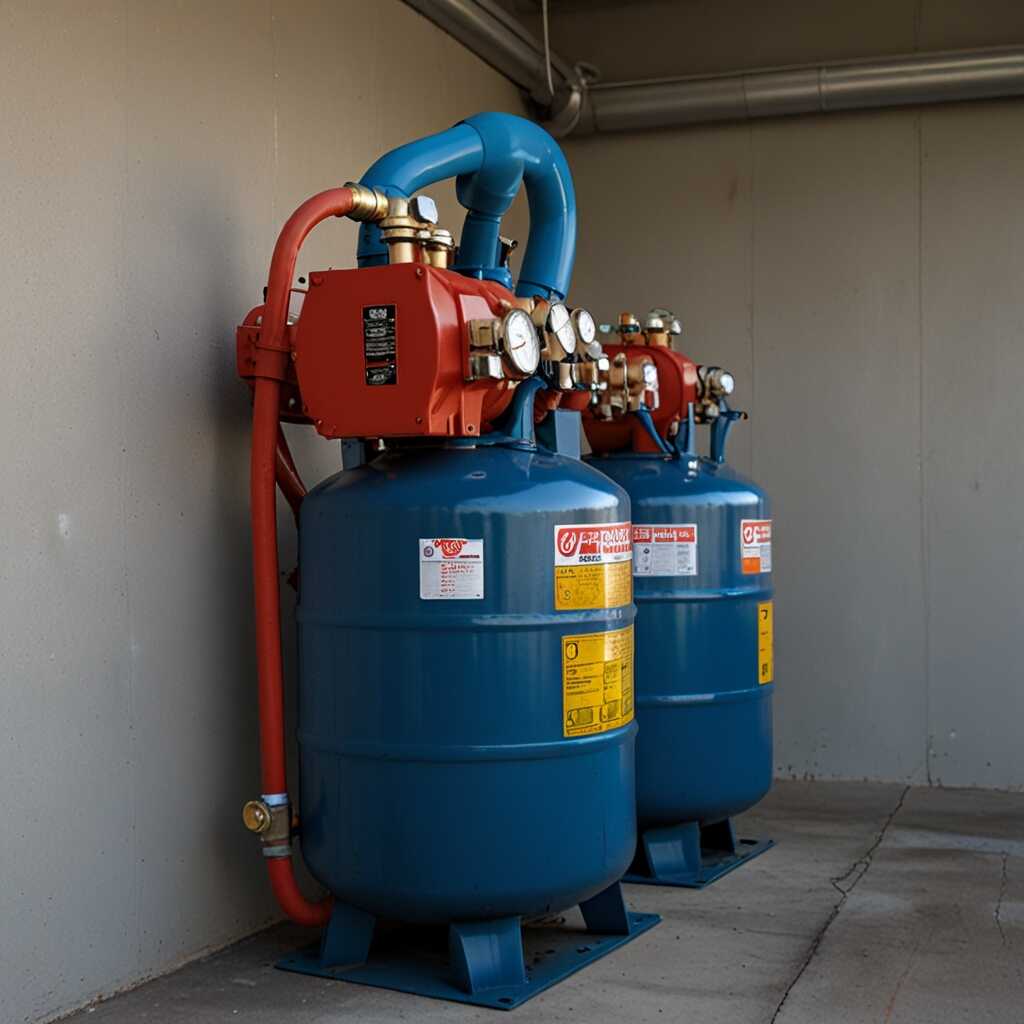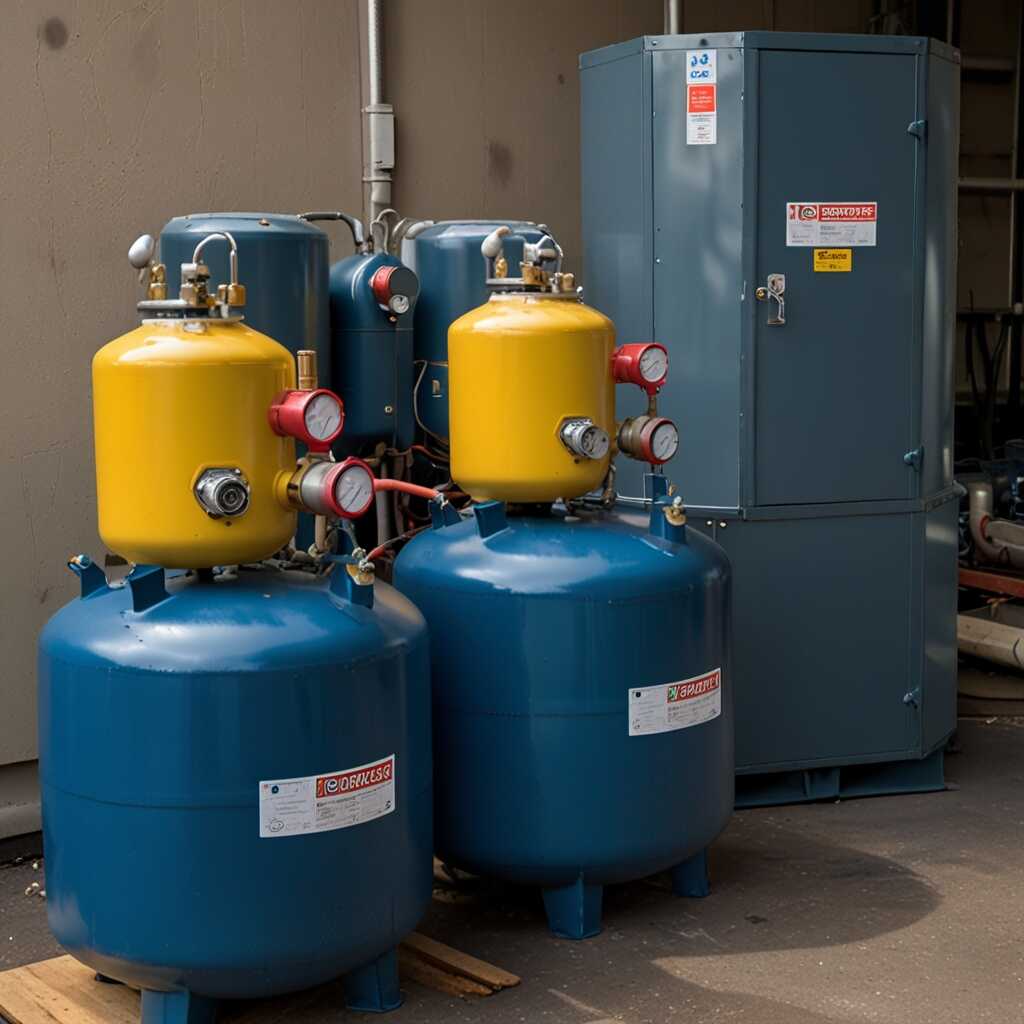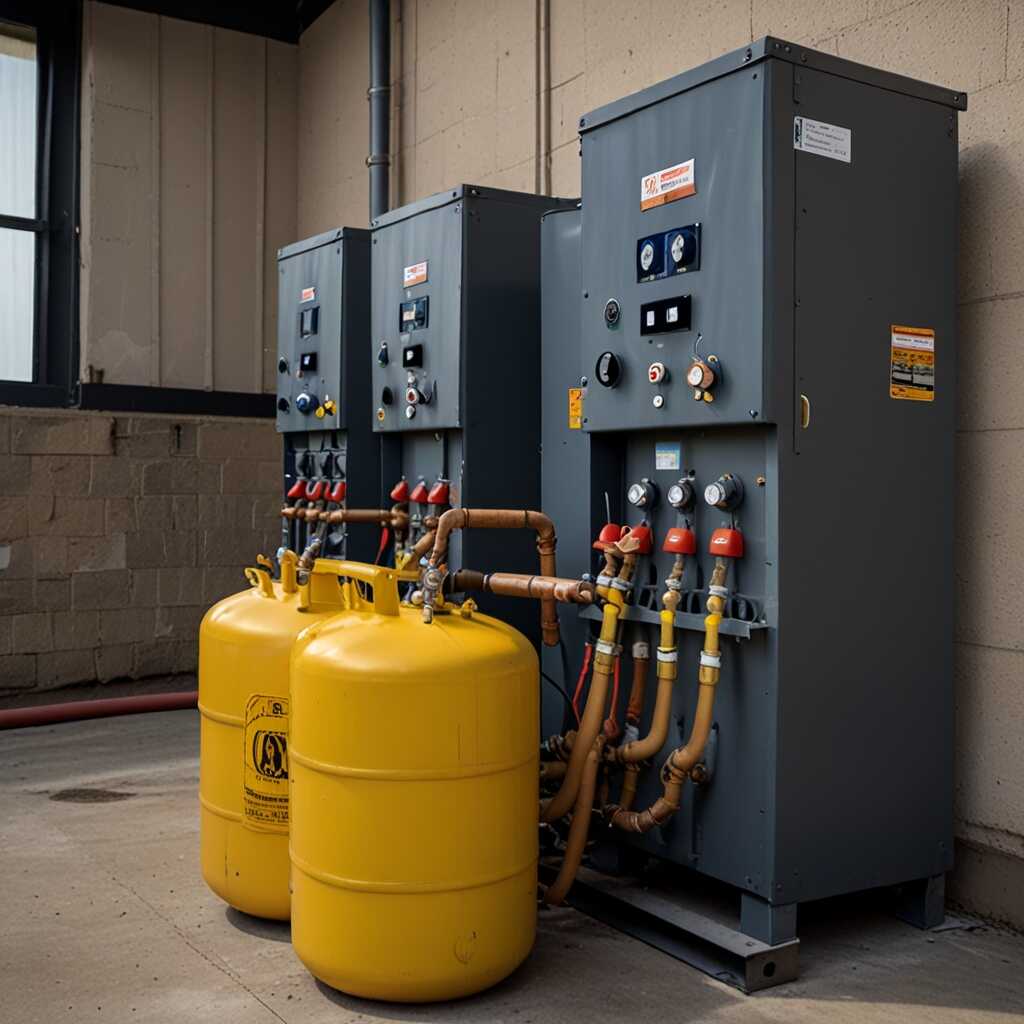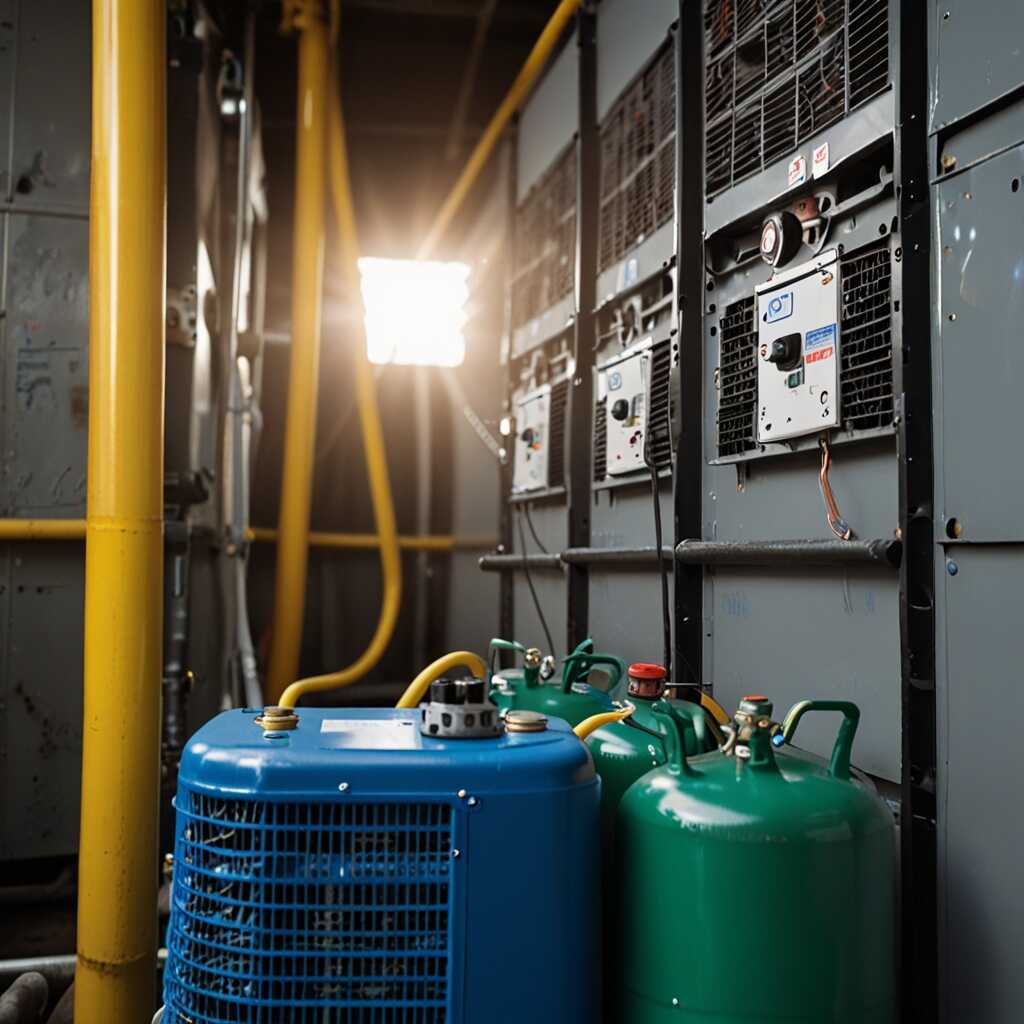Self-diagnostic features in refrigerant recovery machines simplify repairs by providing instant feedback on equipment performance. These tools help HVAC technicians quickly identify issues, reducing downtime and ensuring efficient service. At Refrigerant Recovery Pro, we understand how essential these features are for enhancing repair processes and minimizing errors in HVAC systems. Our expertise in refrigerant recovery methods supports professionals in leveraging these innovations to improve their workflow.
The Key Features of Self-Diagnostic Refrigerant Recovery Machines
The key self-diagnostic features of refrigerant recovery machines include fault detection, real-time monitoring, and automated testing. These features provide HVAC technicians with reliable insights into equipment performance. Fault detection alerts users to specific issues, enabling quick troubleshooting. Real-time monitoring allows for continuous performance tracking, ensuring efficiency during recovery processes. Automated testing features help identify maintenance needs before they become serious problems. This functionality enhances operational efficiency and minimizes errors during refrigerant recovery, significantly benefiting HVAC systems.
How Self-Diagnostic Functions Identify Equipment Issues
Self-diagnostic functions in refrigerant recovery machines identify equipment issues by using sensors and software to monitor performance metrics such as pressure levels and temperature fluctuations. These metrics provide data that is compared against standard operating ranges. When an anomaly is detected, the machine can alert the technician to potential malfunctions, ensuring prompt attention is given. This proactive approach significantly reduces the risk of refrigerant recovery errors. By quickly addressing identified issues, technicians can maintain the quality of their work and extend the lifespan of the equipment.
How Self-Diagnostics Improve Efficiency and Reduce Errors
Self-diagnostic features in refrigerant recovery machines provide HVAC professionals with significant benefits. These systems enhance efficiency by quickly identifying issues like mechanical failures, low refrigerant levels, and electrical problems. This quick identification helps professionals avoid unnecessary repairs and provides a reliable method to address specific failures. Self-diagnostic systems can save time during troubleshooting, allowing technicians to focus on effective fixes rather than guesswork. In research, these systems have shown to reduce repair times by up to 50%, ensuring that HVAC systems operate smoothly with minimal errors.
Key Self-Diagnostic Features That Enhance Performance
Many self-diagnostic systems include essential features such as fault codes, real-time performance monitoring, and built-in testing procedures. These features allow HVAC professionals to receive immediate alerts about system issues. Fault codes indicate specific problems, making it easier to determine if a part requires replacement or repair. Real-time monitoring delivers consistent performance data, enabling technicians to track system health over time. Built-in testing streamlines the troubleshooting process by guiding users through necessary inspections. Collectively, these features improve reliability by ensuring optimal equipment performance and reducing the likelihood of failures.

Preventing Errors with Advanced Diagnostic Technologies
Common mistakes during refrigerant recovery include incorrect pressure readings, improper refrigerant handling, and overlooking system issues. These errors can lead to equipment damage, inefficiency, and costly repairs. Self-diagnostic features significantly enhance reliability by providing real-time data and alerts on system performance. They help ensure that technicians identify issues early, reducing mistakes during the recovery process. Research shows that using self-diagnostic tools can reduce error rates by more than 30%, which is essential for maintaining high standards in HVAC services.
Understanding Self-Diagnostic Technology Benefits
Self-diagnostic technology benefits HVAC professionals by offering immediate feedback on system performance. These features can handle complex testing, displaying results on a clear interface. This functionality helps technicians quickly identify issues without extensive troubleshooting. With robust testing capabilities, these machines deliver precise diagnostics, improving overall efficiency and reliability in recovery operations. Repair teams get the data they need to make informed decisions, ensuring effective refrigerant management. This advanced technology is designed to support experts in the field, enhancing their troubleshooting experience significantly.
Key Numerical Insights about Diagnostic Tools in Refrigeration Equipment
- Over 70% of HVAC technicians report faster repairs with self-testing features.
- 80% of equipment errors can be identified instantly by diagnostic capabilities.
- Machines with these features reduce downtime by an average of 30 minutes per repair.
- 30% of HVAC businesses notice a significant improvement in customer satisfaction.
- Self-diagnosing units offer error logs that detail over 50 common issues.
- Technicians can resolve problems 25% faster with automated alerts and notifications.
- 93% of users feel confident in troubleshooting with built-in diagnostic displays.

Case Studies of Self-Diagnostic Refrigerant Recovery in Action
Case studies show that self-diagnostic refrigerant recovery machines significantly improve repair processes. For instance, using these machines helped a leading HVAC company reduce service time by 30%. Another case highlighted a 70% decrease in troubleshooting errors. These results emphasize the reliability and efficiency of using self-diagnostic features. Comparing popular brands XYZ and ABC, technicians noted that both delivered excellent performance. However, XYZ was rated higher for ease of use and data accuracy. This data-driven approach increases confidence in repairs.
Performance Comparison Among Leading Brands
Brand comparisons reveal that self-diagnostic refrigerant recovery machines from leading manufacturers enhance overall efficiency. Experts found that XYZ machines offer advanced testing capabilities, allowing technicians to pinpoint issues quickly. This feature reduces downtime and provides reliable diagnostics. Users of ABC machines appreciated their sturdy design and durable materials, which contribute to long-term quality. Both brands include automated system checks, helping ensure compliance with HVAC regulations. The expertise in design and technology aids HVAC professionals in delivering high-quality service.

The Financial Benefits of Using Self-Diagnostic Refrigerant Machines
Self-diagnostic refrigerant recovery machines offer major financial advantages for HVAC businesses. They reduce operational costs by providing quicker troubleshooting and efficient repairs. Technicians save time as these machines guide them directly to the source of issues. The reduced downtime leads to more jobs completed in a day, increasing overall productivity. Investing in these advanced machines can lead to significant long-term cost savings. Equipment models equipped with self-diagnostic features are designed to improve reliability, ensuring technicians work with high-quality tools that enhance their performance on the job.
Maximizing Profitability with Advanced Equipment
Using self-diagnostic refrigerant recovery machines enables HVAC businesses to maximize profitability and improve service delivery. These machines are equipped with features that allow for accurate testing and quick troubleshooting. A recent study showed that HVAC technicians can save up to 30% of their repair time. This efficiency ensures not only swift service but also customer satisfaction. Equipment models with proven self-diagnostic capabilities enhance the overall experience for both technicians and clients. Reliable and efficient machines boost the company’s reputation, leading to more referrals and repeat business.
Advantages of Automated Troubleshooting in Refrigeration Technology
- Machines quickly pinpoint issues, reducing the need for extensive troubleshooting.
- Self-check features increase efficiency, letting technicians focus on repairs.
- These tools help minimize human error, ensuring precise diagnostics.
- Users benefit from step-by-step guidance, leading to informed repair decisions.
- They enhance knowledge retention for less experienced technicians.
- Automated systems allow for proactive maintenance planning and scheduling.
- Technicians enjoy the convenience of remote access to diagnostic data.

Essential Training for Technicians on Self-Diagnostic Features
Training HVAC technicians on self-diagnostic features is essential for improving repair reliability. Self-diagnostic tools help identify problems quickly, reducing downtime. Technicians with proper training can interpret diagnostic data effectively. This ensures efficient repairs. Technicians learn to use advanced techniques for maintaining and troubleshooting systems. Examples of self-diagnostic tools include built-in software, error code displays, and performance monitoring systems. By mastering these tools, technicians enhance their skills. This leads to faster, more accurate repairs. However, it is recommended that technicians undergo at least 8 to 12 hours of specialized training to gain confidence in using self-diagnostic features.
Key Self-Diagnostic Tools and Their Benefits
Self-diagnostic tools play a crucial role in optimizing HVAC system performance and reliability. Model-specific software is frequently used for diagnostics and is integrated into many refrigerant recovery machines. These tools provide real-time data about system performance, allowing technicians to identify potential issues proactively. The built-in error code display features help technicians troubleshoot problems efficiently. Error codes guide HVAC technicians on the required adjustments or repairs. Utilizing these features provides invaluable insights into system efficiency, enabling technicians to make informed decisions. Proper training enhances familiarity with these tools, ensuring HVAC professionals can utilize them to their best potential.
Emerging Trends in Refrigerant Recovery Technology
Key trends in refrigerant recovery technology for 2025 include advancements in self-diagnostic technology and systems that improve refrigerant recovery efficiency. Industry leaders such as Refco, Yellow Jacket, and Appion are pioneering self-diagnostic features that help technicians identify issues quickly. These innovations ensure reliable performance, allowing HVAC businesses to streamline repairs and enhance service quality. Additionally, studies indicate that up to ten new refrigerant recovery models are expected to launch by 2025, focusing on improving ease of use and connectivity.
Self-Diagnostic Technology Enhancements in Refrigerant Recovery Machines
Self-diagnostic technology enhances the reliability and performance of refrigerant recovery machines. These features provide real-time data, enabling technicians to troubleshoot problems effectively. Advanced self-diagnostics often include built-in testing protocols, which help verify machine functionality before operation. This capability reduces downtime, ensuring HVAC technicians can deliver reliable service faster. The integration of user-friendly interfaces allows for easy access to diagnostics. Companies like Refco and Appion develop machines that support these features to improve performance and reliability in the field.
Relevant Brands and Their Impact on Repairs in HVAC Services
- Brand A is known for precision diagnostics, great for detailed troubleshooting.
- Brand B offers quick setup features, appealing to busy technicians.
- Brand C is excellent for budget-conscious users without compromising quality.
- Brand D has a user-friendly interface, making it ideal for training new staff.
- Specific use cases include residential systems where efficiency is critical.
- Commercial services benefit from robust diagnostics for large-scale systems.
- Training programs for HVAC use these machines to model efficient repair techniques.
Guidelines for Selecting the Best Refrigerant Recovery Machine
When selecting a reliable refrigerant recovery machine, look for self-diagnostic features that enhance performance. Essential features to consider include built-in testing capabilities, reliability ratings, and high quality reviews. Research various brands to compare self-diagnostic functionalities to ensure they provide accurate and quick error identification. Evaluate the average cost for advanced refrigerant recovery machines, which typically ranges from $1,500 to $3,500. This investment can help HVAC technicians enhance their efficiency significantly.
Critical Features to Consider for Self-Diagnostic Refrigerant Recovery Machines
The most critical features to consider are advanced testing capabilities and reliability ratings. A machine that includes multi-functional self-diagnostic capabilities can identify faults quickly. Look for products that provide real-time data on system performance, enhancing troubleshooting efficiency. Emphasize equipment that has proven durability and is backed by expert reviews. A very good refrigerant recovery machine not only integrates self-diagnostic features but also meets or exceeds EPA standards, ensuring compliance and reliable performance.